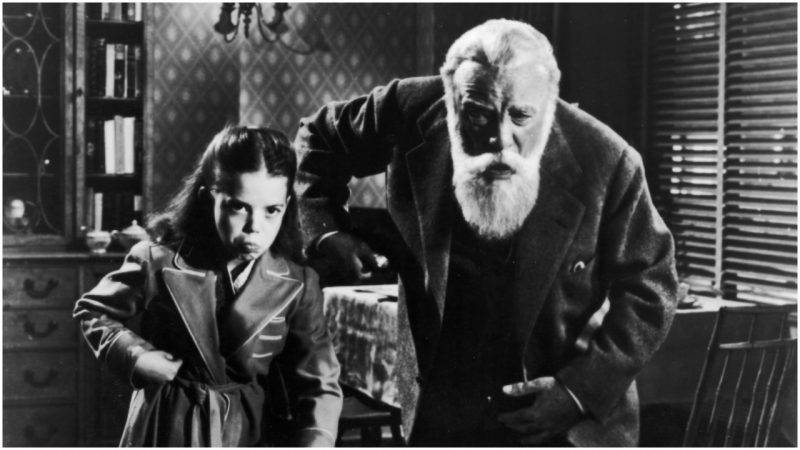“You’ll love ‘Miracle on 34th Street’! It’s hilarious, it’s romantic, it’s delightful, it’s charming, it’s tender, it’s exciting. Yes, it’s groovy!”
Hold on, of all the adjectives you might pile on the heartwarming black-and-white 1947 Christmas classic Miracle on 34th Street … groovy? And yet this was how the movie was promoted in a hilariously dated if somewhat puzzling trailer featuring a group of executives congratulating themselves on what is now considered one of the most beloved Christmas movies of all time.
Everyone did love it. Released as a romantic comedy in May 1947—because studio heads banked on more people going to the movies in the summer— Miracle on 34th Street was an immediate critical and commercial success.
Indeed, the only people who didn’t like the movie were those in the Catholic League of Decency, who disapproved of Maureen O’Hara’s character of a divorced mother holding a full-time job outside the home. It gave the film a “B” rating, citing it as “morally objectionable.”
Nevermind that Kris Kringle (Edmund Gwenn), a bearded old gentleman, gets appointed to play Santa Claus in the Macy’s Day Parade to replace a drunkard. Well-meaning Doris Walker (O’Hara) hires Kringle to reprise his role in the department store but discourages her young daughter (Natalie Wood, then 8) from believing in the fantasy of Santa. When Kringle’s insistence he is the real Santa nearly gets him locked away, Walker’s handsome lawyer neighbor (played by John Payne) steps in to save the day and ultimately wins the hearts of the single mom and her daughter.
“For all those blasé skeptics who do not believe in Santa Claus—and likewise for all those natives who have grown cynical about New York—but most especially for all those patrons who have grown weary of the monotonies of the screen, let us heartily recommend the Roxy’s new picture, ‘Miracle on 34th Street,’” raved the New York Times in a June 5, 1947 review. “As a matter of fact, let’s go further: let’s catch its spirit and heartily proclaim that it is the freshest little picture in a long time, and maybe even the best comedy of this year.”
The Academy loved it too. Nominated for a Best Picture Oscar, Miracle won awards for Best Supporting Actor (Edmund Gwenn’s Kris Kringle), Best Screenplay, and Best Motion Picture Story. In his acceptance speech, Gwenn said, “Now I know there’s a Santa Claus.”
There were a few miracles in the making of Miracle. The Macy’s Day parade was the actual parade, meaning the crew got only one shot. Edmund Gwenn really did play Santa in the parade. Studio executives didn’t secure permission from the department store (or its competitor Gimbel’s) until after filming concluded, though it’s hard to see why either company wouldn’t approve such valuable marketing. Natalie Wood was young enough to still believe in Santa. “I guess I had an inkling that maybe it wasn’t so, but I really did think that Edmund Gwenn was Santa,” she said in her biography by Suzann Finstad.
It was so cold on the day the crew shot young Natalie’s dream house at the end of the film that the cameras froze and the cast had to wait while the equipment thawed out. The house, built in 1943, still stands at 24 Derby Road, in Port Washington, New York, looking almost exactly now as it did in its screen appearance.
The cast got along well, though, hanging out after filming for dinner, drinks, and window shopping. They cracked themselves up on set. When Gwenn as Kris Kringle fills out his employment card, he quotes satirist Jonathan Swift for his date of birth: “I’m as old as my tongue and a little older than my teeth.”
Seen through today’s eyes, the film is remarkably progressive. Though it’s a Christmas movie, its nondenominational plot omits religious references. O’Hara’s “morally objectionable” character was a rarity in those days: a divorced single mother who happens to be a corporate executive.
“Maureen O’Hara’s character is a wonderful role model,” actress Natasha Wagner, the daughter of Natalie Wood, told Newsday in 2015. “Because the movie is a classic, its feminism gets overlooked.”
